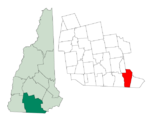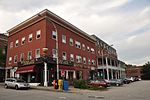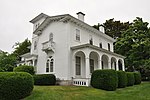Alvirne High School

Alvirne High School is located in the town of Hudson, New Hampshire, United States, with an enrollment of approximately 1,300 students from grades 9–12. Alvirne gets its name from a prominent Hudson family, the Alfred and Virginia Hills family, who left a large piece of property to the town in the early 20th century to provide land for the building of a high school. A portmanteau of their names (Alfred and Virginia and their son Ned) provides the name for the school. The school mascot is the bronco, and the school colors are maroon and gold.Opened in 1992, the Wilbur H. Palmer Vocational - Technical Center, a career and technical education school, is housed on the same campus as Alvirne High School. Students from area high schools whose schools do not have CTE programs currently offered at the Wilber H. Palmer Center may apply for admission to the school. Students in the Wilber H. Palmer Center take their core academic classes as part of Alvirne High School, and take vocational courses at the center.
Excerpt from the Wikipedia article Alvirne High School (License: CC BY-SA 3.0, Authors, Images).Alvirne High School
Derry Road,
Geographical coordinates (GPS) Address Website External links Nearby Places Show on map
Geographical coordinates (GPS)
| Latitude | Longitude |
|---|---|
| N 42.793 ° | E -71.438 ° |
Address
Alvirne High School
Derry Road 200
03051
New Hampshire, United States
Open on Google Maps











